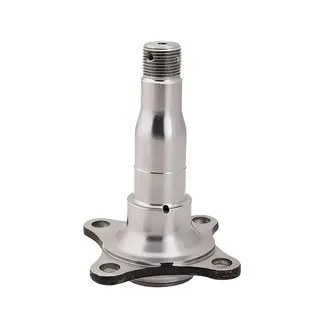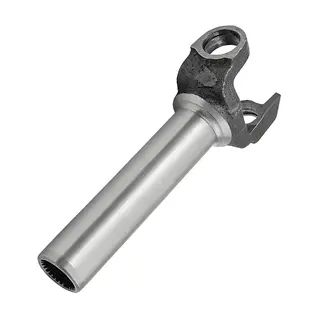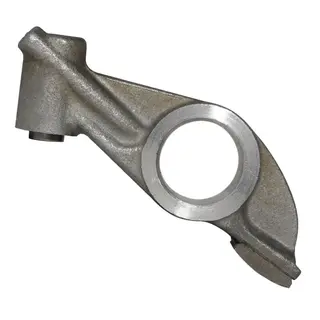In modern manufacturing, the forging process plays an indispensable role, and die forging stands out among them. Die forging, short for mold forging, is a forging method in which a metal billet is placed into a mold for forming. It is widely used in mass production of various precision parts. From connecting rods in automobile engines to precision components in aerospace, die-forged parts, with their excellent performance and efficient production, have become the first choice in many industries. This article will explore in detail the process flow of die forging, its advantages, different types, and its applications in actual production, to help readers gain a comprehensive understanding of this advanced forging technology.
The entire production process of die forging can be divided into several key procedures, each of which is crucial to ensuring that the final product meets design requirements.
The first step of die forging is cutting the raw material according to the required size of the forging. This step may seem simple, but it has a profound impact on subsequent processing. Accurate cutting not only reduces material waste but also improves production efficiency. The cut blank will then move on to the next key stage: heating.
Before entering the forging stage, the blank needs to be heated to the temperature required by the deformation process. Control of the heating temperature is extremely critical; excessively high or low temperatures will affect the metal's flowability and the final quality of the forging. The proper heating temperature allows the metal to flow more easily in the subsequent forging process, filling the mold cavity to obtain the desired shape.
The forging process is the core stage of die forging and can be divided into blank making and die forging. There are various methods of blank making, including but not limited to die forging and open forging. The die forging step involves placing the heated blank into the mold, and through the impact force of a hammer or slider, the metal undergoes plastic deformation, filling the mold cavity, and finally obtaining a forging consistent with the mold shape. During this process, the metal forms quickly under the constraints of the mold, ensuring very high production efficiency.
The procedures after die forging are equally important, mainly including trimming, punching, heat treatment, straightening, surface cleaning, removal of residual burrs, precision pressing, and more. The purpose of these steps is to further optimize the performance and appearance of the forging so that it fully meets design requirements. For example, heat treatment can improve the mechanical properties of the metal, making it tougher and more durable; surface cleaning and polishing can remove surface defects and improve surface quality.
Inspection is an indispensable part of die forging production, including in-process inspection and final inspection. In-process inspection usually adopts sampling methods, and the items include shape and dimensions, surface quality, metallographic structure, and mechanical properties. These inspection items ensure the processing quality of each stage and provide a guarantee for the reliability of the final product. The final inspection is a comprehensive quality evaluation of the finished product, and only forgings that pass strict inspection can enter the market.
Compared with other forging methods, die forging has many significant advantages, making it highly favored in modern manufacturing.
High production efficiency is one of the biggest advantages of die forging. Since the metal deforms inside the mold, forming speed is fast, enabling mass production. When the batch size is sufficient, die forging can significantly reduce the production cost of parts and improve economic benefits. For example, in automobile manufacturing, common parts such as connecting rods and crankshafts can be produced in large quantities in a short time through die forging, meeting market demand.
Die forging can produce parts with complex shapes and high dimensional accuracy. Under the constraints of the mold, the metal can precisely fill the mold cavity, obtaining forgings consistent with the mold shape. This high-precision forming method has been widely used in industries such as aerospace and automotive, which have very high precision requirements. For example, complex parts such as blades and turbine disks of aircraft engines can be accurately manufactured through die forging to meet strict engineering requirements.
Die-forged parts have excellent mechanical properties, mainly due to the reasonable metal flow during the forging process. Die forging can make the metal flow lines more reasonable and the structure more compact, thereby improving the strength and toughness of parts. For example, connecting rods processed by die forging have significantly higher strength and service life than those processed by open forging. These excellent mechanical properties allow die-forged parts to perform well under high stress and complex conditions, reducing part failure rates.
Die-forged parts have high dimensional accuracy and small machining allowances, which means that a large amount of cutting work can be reduced in subsequent machining. In addition, since die-forged parts can achieve higher shape complexity, they can directly meet design requirements, further reducing material waste. In mass production, these advantages can significantly reduce production costs and improve enterprise competitiveness. For example, the crankshaft journal areas after die forging often do not require additional machining, saving large amounts of material and processing time.
Die forging can also be divided into open-die forging and closed-die forging.
The simplest forging process, in which heated metal is hammered or pressed between two flat or simply contoured dies, gradually forming the part. This method is especially suitable for producing large, complex metal parts such as shafts, flanges, and cylinders. Open-die forging can enhance material properties and improve grain structure, and is widely used in heavy industries such as aerospace and automobile manufacturing.
Also known as flashless forging, it is a more precise forging process. During forging, the gap between the upper and lower dies remains unchanged, and the billet forms in the fully enclosed mold cavity without producing lateral flash. Parts produced by closed-die forging have excellent strength, durability, and dimensional accuracy, making them suitable for manufacturing complex and precise metal components. For example, key automotive components such as connecting rods and crankshafts are often produced by closed-die forging to ensure high quality and performance.
Open forging and die forging are two common forging methods, each with its own characteristics and application scenarios. Understanding their differences helps in choosing the most suitable process.
The main advantage of open forging is its high flexibility. It can forge small parts under 100 kilograms to large parts exceeding 300 tons, with a wide range of applications. Open forging tools are mostly common tools, requiring low equipment precision and short production cycles. In addition, since billets can be deformed gradually in regions, the required press capacity is relatively small. For example, in large-scale machinery manufacturing, open forging is used to produce large ingots and blanks, laying the foundation for subsequent processing.
The advantages of die forging lie in high production efficiency, high precision, and excellent mechanical properties. Since deformation occurs in the mold cavity, ideal shapes can be obtained quickly, including complex forgings. Die-forged parts have high dimensional accuracy, small machining allowances, and good surface quality, saving materials and reducing machining workload. In mass production, die forging can significantly lower production costs. For instance, in automobile manufacturing, die forging is widely used for producing critical parts such as connecting rods, crankshafts, and gears, whose high quality and precision are vital to vehicle performance and reliability.
Despite its advantages, open forging has obvious limitations. Its production efficiency is much lower than die forging, forged shapes are simple, dimensional accuracy is poor, and surfaces are rough. In addition, open forging places high demands on labor intensity and technical skills, and achieving mechanization or automation is difficult. These limitations restrict its use in modern manufacturing, especially in areas requiring high precision and efficiency.
Die forging is not without shortcomings. Firstly, limited by ordinary die forging equipment capacity, forged parts generally do not exceed 70 kilograms. This means die forging cannot meet the demand for ultra-large parts. Secondly, the production cycle is relatively long, and the investment cost is high. For example, precision die molds are expensive to manufacture and require long development cycles. Furthermore, maintenance and operation of die forging equipment require skilled technicians, increasing operating costs.
Die forging is widely used in modern manufacturing, covering industries such as automotive, aerospace, and machinery manufacturing. Below are specific application examples.
Die forging is extensively used to produce various critical parts in automobile manufacturing. For example, engine connecting rods, crankshafts, and gears are commonly produced through die forging. The high precision and excellent mechanical properties of die-forged parts ensure stability and reliability under heavy loads. In addition, die forging can also produce structural parts of car bodies, such as crossbeams and longitudinal beams. Their high strength and lightweight design improve vehicle safety and fuel economy.
The aerospace industry has extremely high requirements for part precision and performance, and die-forged parts play an important role here. For instance, blades, turbine disks, and casings of aircraft engines are manufactured using die forging. These parts must operate under extreme conditions of high temperature, high pressure, and high rotational speed. The high strength, toughness, and fatigue resistance of die-forged parts meet these demanding requirements. Additionally, die forging can produce aerospace structural components such as landing gear and wing spars, whose high quality and reliability are essential for flight safety.
In machinery manufacturing, die forging is used to produce various mechanical parts such as shafts, gears, and flanges. These components are vital in mechanical transmission and power delivery. The high precision and excellent mechanical properties of die-forged parts ensure efficient operation and long-term stability of mechanical systems. For example, the main spindles and transmission gears of large machinery are often manufactured by die forging to meet requirements of high precision and heavy load.
As an efficient forging process, die forging holds an irreplaceable position in modern manufacturing. Through precise mold forming, it can rapidly produce parts with complex shapes, high precision, and excellent performance, meeting the needs of industries such as automotive, aerospace, and machinery manufacturing.
Although die forging has certain limitations, the development of technologies such as warm forging and cold forging promises a bright future. By continuously optimizing processes, improving equipment performance, and reducing costs, die forging will continue to play an important role in future manufacturing, contributing more to technological progress and economic development.



